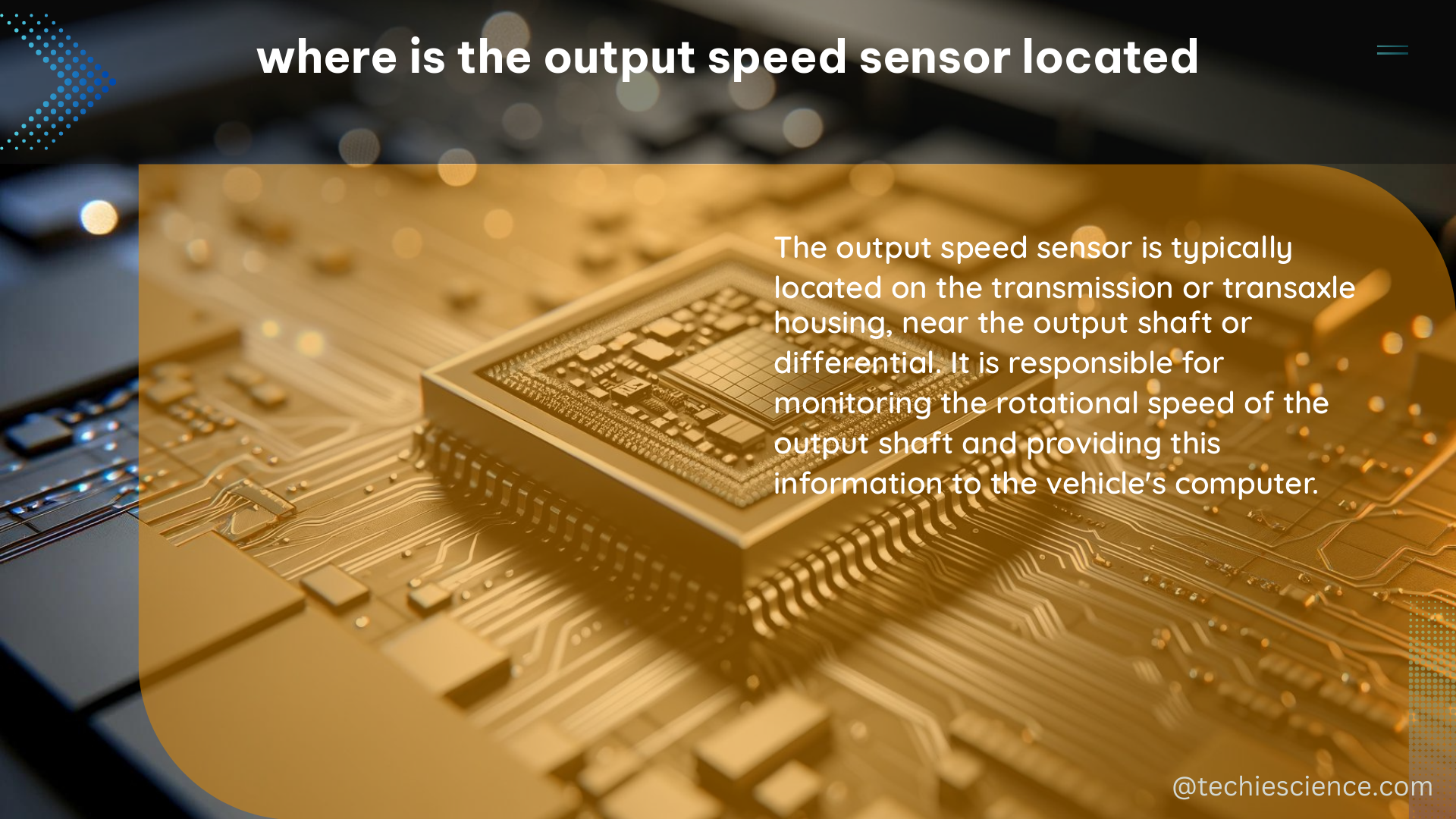The output speed sensor, also known as the vehicle speed sensor (VSS), is a critical component in a vehicle’s powertrain control system. It is responsible for measuring the rotational speed of the output shaft of the transmission or differential, which is directly proportional to the vehicle’s speed. This information is then transmitted to the engine control module (ECM) or powertrain control module (PCM), allowing for the precise control of various vehicle functions, such as cruise control, traction control, and anti-lock braking systems.
Understanding the Output Speed Sensor
The output speed sensor is typically a passive sensor, meaning it does not require an external power source. It generates a voltage signal that varies with the rotation of the output shaft. The sensor consists of a toothed wheel, called a reluctor, that is attached to the output shaft. As the reluctor rotates, it passes by a magnetic field generated by a permanent magnet or an electromagnet. This magnetic field induces a voltage in a coil of wire that is wrapped around the sensor, and the voltage signal is then transmitted to the ECM or PCM.
Technical Specifications of the Output Speed Sensor

The technical specifications of the output speed sensor can vary significantly depending on the make and model of the vehicle. Some of the key factors that can differ include:
-
Number of Teeth on the Reluctor: The number of teeth on the reluctor can range from as few as 12 to as many as 60 or more, depending on the vehicle’s design and the desired resolution of the speed measurement.
-
Number of Wire Windings in the Coil: The number of wire windings in the sensor’s coil can also vary, typically ranging from 100 to 1,000 or more. This affects the sensor’s voltage output and frequency response.
-
Resistance and Inductance of the Coil: The resistance and inductance of the sensor’s coil can also differ, with typical values ranging from 1 to 10 kΩ for resistance and 1 to 100 mH for inductance.
-
Frequency Response: The frequency response of the output speed sensor is directly related to the maximum speed of the vehicle. Sensors designed for high-speed vehicles may have a frequency response of up to 10 kHz or more, while those for lower-speed vehicles may only require a response of a few hundred Hz.
-
Sensor Location: The physical location of the output speed sensor can also vary, depending on the vehicle’s design. It is typically located on the transmission or differential, but the exact position may differ from one model to another.
-
Sensor Design: The sensor design can also vary, with some using a magnetic pickup sensor and others employing a Hall effect sensor. The choice of design can affect the sensor’s performance, durability, and compatibility with the vehicle’s electrical system.
Locating the Output Speed Sensor
To locate the output speed sensor in a specific vehicle, it is essential to refer to the vehicle’s service manual or repair manual. These resources will provide detailed instructions on how to access and replace the sensor, as well as the technical specifications of the sensor, such as the resistance and inductance of the coil, the number of teeth on the reluctor, and the frequency response of the sensor.
The service manual may also provide information on how to test the sensor for proper operation and how to diagnose and repair any faults in the sensor or the wiring. This information is crucial for ensuring the accurate and reliable operation of the vehicle’s powertrain control system.
Conclusion
The output speed sensor is a critical component in a vehicle’s powertrain control system, responsible for measuring the rotational speed of the output shaft and transmitting this information to the ECM or PCM. The technical specifications of the sensor can vary significantly depending on the make and model of the vehicle, and it is essential to refer to the vehicle’s service manual or repair manual to locate and maintain the sensor properly. By understanding the role and technical details of the output speed sensor, vehicle owners and technicians can ensure the optimal performance and reliability of their vehicles.
References:
- Wikipedia. Setpoint (control system). https://en.wikipedia.org/wiki/Setpoint_(control_system)
- HELLA. Check and change ABS and wheel speed sensors. https://www.hella.com/techworld/us/Technical/Sensors-and-actuators/Check-change-ABS-sensor-4074/
- Dewesoft. What is a sensor and what does it do? https://dewesoft.com/blog/what-is-a-sensor/

The lambdageeks.com Core SME Team is a group of experienced subject matter experts from diverse scientific and technical fields including Physics, Chemistry, Technology,Electronics & Electrical Engineering, Automotive, Mechanical Engineering. Our team collaborates to create high-quality, well-researched articles on a wide range of science and technology topics for the lambdageeks.com website.
All Our Senior SME are having more than 7 Years of experience in the respective fields . They are either Working Industry Professionals or assocaited With different Universities. Refer Our Authors Page to get to know About our Core SMEs.